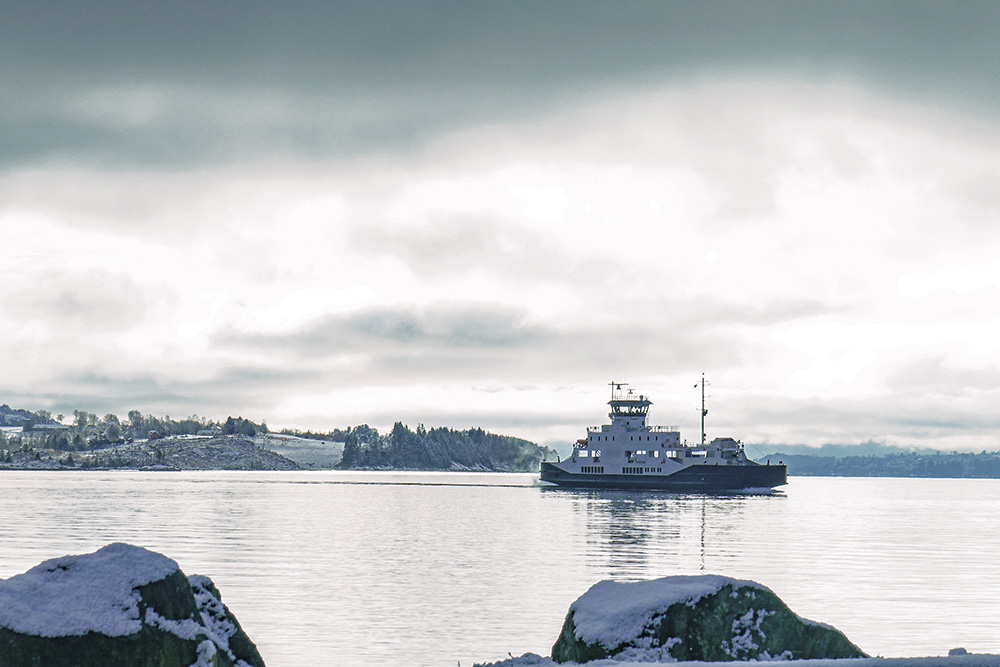Adopting a new policy approach broadly gathered under the label of ‘mission-oriented policies’, some ambitious initiatives are currently being experimented under different shapes and forms to address mounting societal challenges. Philippe Larrue of the OECD takes a look at the way Norway and other countries are handling this practice.
By Philippe Larrue, OECD Policy Analyst
Missions, from Britain to Japan
Quite a few countries are now establishing mission oriented policy initiatives. Pursuing 25 missions as part of its mission-driven top sectors policy, The Netherlands has, for instance, committed to have all Dutch citizens live at least five years longer in good health by 2040, while the health inequalities between the lowest and highest socio-economic groups will have decreased by 30 per cent.
The United Kingdom has established the Industrial Strategy Challenge Fund to fulfill missions such as the halving of the energy use of new buildings by 2030 and the manufacturing of only zero emission new cars and vans by 2040.
Through their Genomics Health Future’s Mission, Australia expects to save or transform the lives of more than 200,000 of their citizens through better genomic-based testing, diagnosis and treatment by 2030.
Japan has recently set six ‘Moonshot goals’, including the realisation of a society in which human beings can be free from limitations of body, brain, space, and time by 2050.
In the last version of its High Tech Strategy, Germany has defined 12 long-term missions to be accomplished as a concerted effort across almost all federal ministries to, for instance, create sustainable circular economies that will achieve a 30 per cent increase in overall raw material productivity by 2030 compared to 2010.
What are mission oriented policies?
Mission oriented policies coordinate various public and private actors, including stakeholders and the citizens, around such bold, concrete and inspirational goals and mobilise a package of coordinated modes of intervention across policy areas.

These policy and regulatory measures possibly span different stages of the innovation cycle from research to demonstration and market deployment and mix supply-push and demand-pull instruments. They aim to break away from established scientific and technologic trajectories, sectorial boundaries and ministerial silos, in order to devise novel solutions through joined up actions.
This new proactive policy approach called upon by many scholars and experts is now raising increasing interest from policy makers – not least in Norway – following notably its adoption in the coming Framework Programme Horizon Europe.
Missions in Norway
Voluntarist public intervention to support knowledge-based growth is nothing new to Norway. Such policy approach has contributed significantly in the more or less recent past to build upon the country’s natural advantages in a few areas (oil and gas, abundant water, seas and oceans, etc.) to become one of the richest countries globally and a leader in related sectors (e.g. oil and gas engineering, aquaculture, shipbuilding).
However, in Norway as elsewhere, it becomes increasingly acknowledged that even the best practices that have enabled remarkable transformation – such as the one Norway achieved in the past century – will not be sufficient to address the societal challenges ahead. The scale, scope and timeframe of these challenges call for types of policy that differ from traditional approaches not only in terms of level of commitment of public resources but also with regard to the governance and design of these policies.
The closest Norway ever got from setting national missions in recent years were the ‘Norwegian moon landing mission’ on Carbon Capture and Storage (CCS) and the the well known electric vehicle policy. While the first one has been a widely reported mission failure (for reasons that have little to do with the policy approach), the second one is considered a success. However, the extent to which the country can learn from these experiences is limited since both have in fact little in common with mission oriented policies as previously defined.
Pilot-E: A cross-agency initiative
More consistent with the Norwegian institutional setting, the most valuable initiatives to build upon and push further a ‘mission-oriented agenda’ in Norway are not to be found at the top level of the system of innovation. So far, preference has been given in Norway to smaller-scale mission oriented initiatives led by agencies, rather than large and more disruptive national missions.
Pilot-E for instance is a challenge-driven cross-agency scheme that supports clean transport and energy solutions from idea to market by combining various means of intervention – different funding schemes but also public procurement and regulatory reforms on a need basis – and tailoring them for targeted projects.
Freely inspired by the ‘ARPA-E’ model in the United States, the expected results of this joined-up approach between three agencies (Research Council of Norway/RCN, Innovation Norway and Enova) are multiple: more rapid development via the fast tracking of projects through the toolbox of schemes of the different agencies; increased predictability of funding for project partners, leading to more engagement on their side; as well as seamless and continuous support to the same projects by the agencies from applied research to market deployment.
We see initial selection of projects on the basis of a more comprehensive and better informed set of criteria, including the requirements of the commercialisation stage of the projects via early involvement of potential users; and a more consistent and progressive portfolio approach, hence going beyond individual projects to cover the solution landscape and components of the value chain.
Like almost all fully-fledged mission oriented policies in the world, it is still too early to assess the extent to which these high ambitions will be realised.
While different from Pilot-E, CLIMIT is another valuable initiative of well targeted cross-agency cooperation to develop and implement CCS technologies in key industrial sectors since 2005.
Lessons learned
These initiatives have already provided important lessons-learned in Norway with regards to the challenges and opportunities of mission-orientation and helped setting the basis for a ‘culture of mission-orientation’ in the country, including among high level policy decision makers.
Based on this experience, Norway has now to decide upon how to get to the next stage with regards to mission-orientation. Two main options can be envisaged.
A first option consists of Norway scaling-up and/or replicating the existing agency-led mission-oriented schemes such as Pilot-E in new areas. To some extent this is already happening as Pilot-E is being progressively streamlined in other thematic areas, under the generic ‘Pilot-X model’.
A Pilot-T scheme has been established by RCN and Innovation Norway in 2019 in the area at the interface between transport and ICT technologies. This model is also considered in the health (Pilot-H), circular economy (Pilot-S), bio-economy or even ocean areas.
However, one of the strengths of these schemes is their focussed and targeted scope that enables dense ‘qualitative’ interactions and trust between the public and private partners, across sectors and policy fields, and generate the ‘accelerator effect’. Any scaling up of these initiatives should not come at the expense of this advantage.
A key question also relates to the versality of such schemes, i.e. whether they are adequate for all challenge areas. Experience tends to suggest they are most effective when they build upon well-established sectors with a strong competitive position, and that the country covers almost the whole value chain, including the users/buyers of the product or service.
Engaging the ministerial level
A second option consists in elevating mission oriented policies above the level of agencies, i.e. at the level of ministries or central government. This option appears more challenging since it requires from higher level public bodies a far stronger involvement than just providing agencies the needed mandate and flexibility to set up and implement joint schemes.
It also requires us to find the conducive institutional framework to host more top-down initiatives. In the absence of a high-level strategic council or a powerful cabinet office as it is the case for instance in Japan, the range of choice for Norway is limited.
The next revision of the Long Term Plan for Higher Education and Research (covering the period 2019– 2028) could represent an important opportunity if structured around some clear and selective missions. Agencies will have a strong role to play as advocates of this second option as well.
RCN is already engaged in promoting a national policy agenda addressing ‘mission-oriented industrial challenges’. It has for instance considered national missions in zero-emission maritime transportation (based on the Pilot-E experience) as well as offshore wind, building notably on the technology and skills developed in the oil and gas sector.
This article is based on a case study funded by RCN in the context of the OECD project on mission-oriented innovation policies. The views and opinions expressed in this article are those of the author and do not necessarily reflect the official position of the OECD
The OECD project on mission-oriented research and innovation policies (MOIPs) in Norway
The OECD has a project called «Mission-Oriented research and innovation Policies to address societal challenges», conducted under the OECD Committee for Scientific and Technological Policy (CSTP).
The project aims to provide a comprehensive understanding of how governments design, fund, coordinate and implement such missions. The policy experts will analyze factors that strengthen or impede the development and implementation of policy initiatives like these. OECD will also provide general policy recommendations in various national and thematic contexts.
Norway is one of the countries included in the study. Among the others we find Austria, Japan and Korea. The OECD staff has interviewed various decision makers and experts in Norway regarding the ways in which the Norwegian government is trying to improve strategic orientation and coordination of polices aimed at societal challenges.
The March 2020 issue of Forskningspolitikk presented several articles on the role of missions in research and innovation policy.
Per Koch
Main photo: Pilot-E has contributed to the electrification of transport in Norwegian coastal waters. Photo teaa1946.

